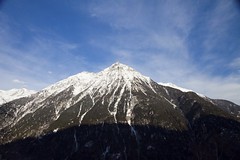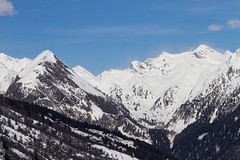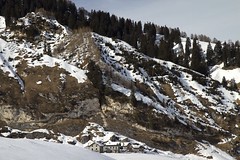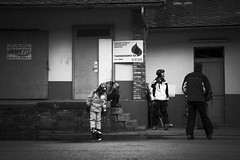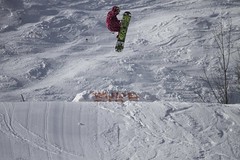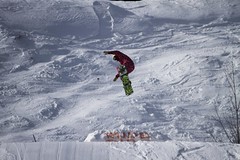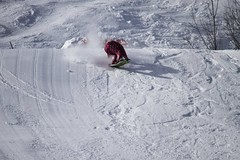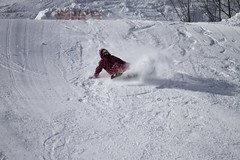(English below)
(Deutsch unten)
Nuestras cortas vacaciones en las montañas de Neuchâtel han llegado a su fin. Para el ultimo dia de nuestra estadia, hicimos una caminata por la nieve. Justo frente a nuestro hotel parten dos senderos para raquetas de nieve, y nosotros tomamos el sendero con direccion a Téte-de-Ran.
Como les habia comentado en el post anterior, la cantidad de nieve en este lugar es impresionante. Calculo que al menos metro y medio de nieve, por lo que es imperativo utilizar raquetas de nieve para poder caminar. El clima estuvo aceptable, muy nublado y con una leve pero constante nevada, con temperaturas que oscilaron entre -5 y -10 grados centigrados. En total, anduvimos caminando por casi 6 horas, por los inolvidables paisajes de los alpes de jura del canton de Neuchâtel. Hagan click en las fotos para verlas en grande.
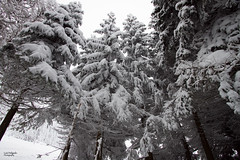
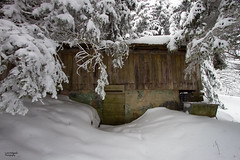
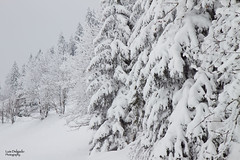
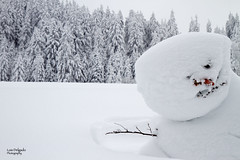
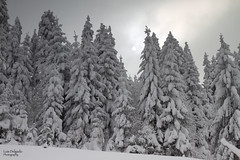
De camino a Téte-de-Ran, tuvimos la agradable sorpresa de encontrarnos un trineo tirado por perros. Fue un momento muy atractivo porque adelante iba el guia con el trineo, y detras un niño con un mini-trineo tirado por solo dos animales. Imagino que se trataba del hijo del guia, a quien ya le estan enseñando los secretos del trineo. Fue una oportunidad para tirar fotos a maxima velocidad con la camara 7D y con el teleobjetivo, en una rafaga de 8 fotos por segundo. Salieron casi 100 fotos de los perros, de las cuales estan son las mejores. Hagan click en las fotos para verlas en grande.
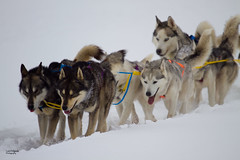
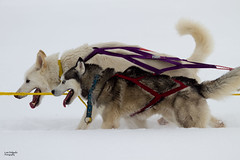


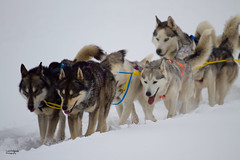

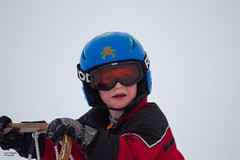
Our short trip to the mountains of Neuchâtel has come to an end. For our last day, we did a hike through this snowy landscape. Just in front of our hotel, a snowshoe trails begins, trail that finishes at a place called Téte-de-Ran.
As I told you on the last post, the amount of snow here is huge. I estimate at least one meter and a half of snow, so the use of snowshoes is almost mandatory. As for the weather, is was overcast, with a slight but constant snowfall, temperature oscillating between -5 and -10 degrees Celsius. In total, we hiked for about 6 hours through unforgettable landscapes of the Jura alps in canton Neuchâtel. Click on the pictures to enlarge them.





On our way to Téte-de-Ran, we had a very cool surprise. We met a small family doing some dog-sledging. It was a very nice moment because the group was headed by a big sledge, followed by a kid on a tiny-sledge pulled by just two dogs. I think the dog trainer was maybe teaching his kid the secrets of dog-sledging. Anyway, it was an opportunity to put on the telephoto lens and shoot with the Canon 7D camera at full outburst of 8 frames per second. From almost 100 pictures taken, these are the best. Click on the pictures to enlarge them.







Unsere kurze Reise in die Bergen von Neuenburg ist zu Ende. Am letzten Tag haben sind wir mit den Schneeschuhen wandern gegangen. Gerade gegenüber unser Hotel begint ein Wanderweg Richtung Téte-de-Ran.
Als ich euch im letzten Beitrag erzählt habe, die Schneemenge hier ist unglaublich. Mindestens 1.5 meter Schnee, schätze ich ein. Deshalb sind die Schneeschuhen notwendig. Das Wetter war akzeptabel: stark bewölkt, Temperatur zwischen -5 und -10 Grad. Insgesamt, sind wir ca. 6 Stunden durch unvergesslichen Landschaften der Jura Alpen gewandert. Klick die Bilder an, um sie zu vergrössern.





Als wir unterwegs waren, hatten wir eine tolle Überraschung. Eine kleine Familie war mit Hundeschlitten unterwegs! Es war grossartig, weil hinter dem grossen Schlitten kam ein kleiner mit nur zwei Hunde, den durch ein Kind geführt war. Ich nehme an, dass der Hundtrainer schon die Geheimnisse des Hundeschlitten seinem Kind lehrt. Auf jedem Fall, war diese eine gute Gelegenheit, Bilder mit dem Telefotolinse aufzunehmen. In 8 Bilder pro Sekunde eingestellt, habe ich mit der Canon 7D Kamera ca. 100 Bilder von den Hunden gemacht. Die folgenden sind die besten. Klick die Bilder an, um sie zu vergrössern.















